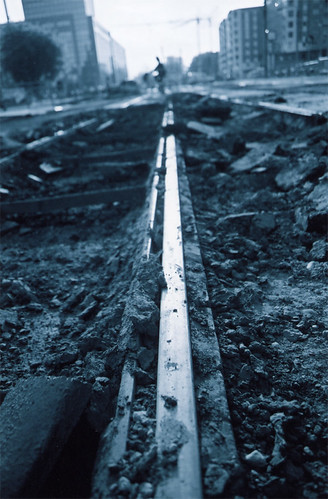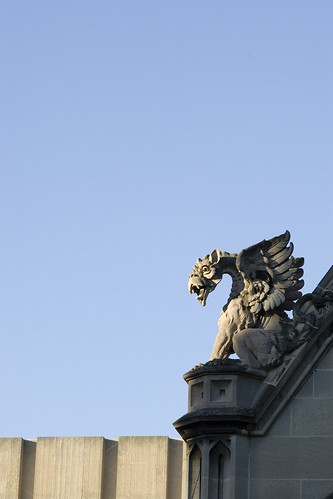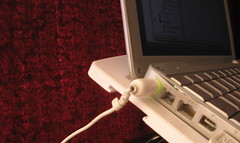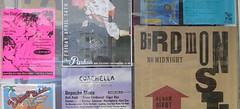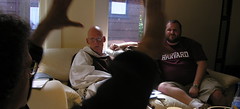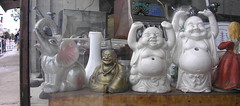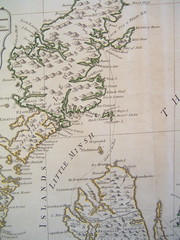
Traditional searching mingles scholarly and unscholarly texts indiscriminately. Google Book Search, for instance, will give you nineteenth-century textbooks on political economy alongside radical screeds in the morning paper.
Some scholars are disturbed by this chaotic glut of information online. They want new tools to help them find the other scholars with awards and titles behind their name, who have published and been lauded; nor are conferences and university presses and google scholar and the thousand other tools for finding colleagues enough for them: they want to have their own Panopticon of a search, disciplining the little search hits into neat rows.
Scholars worried about their authority have a recourse: a peer-reviewed search. Colleagues vet academic websites, describe the ones that are sufficiently rigorous and authority-driven, and provide the scholarly community with an authority-driven, defensible index of peer reviewed sites.
Here, to answer their prayers, is Nines, a defensible, authoritative, peer-reviewed index of online exhibits pertaining to the nineteenth century:

Now I love this idea, honest, and I'm probably going to use Nines a lot.
But I'm also disturbed by it.
A prying question: what if I *wanted* to search an index that included Sally Anne's genealogical website that houses manuscripts from her grandfather's family of tin miners in Cornwall? Sally Anne's family documents aren't going to show up on Nines. Nor is the amateur collection of online costumes by naval enthusiasts. Nor will the crowd-sourced documents uploaded and tagged by Flickr users.
Some of us (social historians?) tend to think that the mingling of authoritative and unauthoritative sources is a good thing. It returns the historian to the naive viewpoint of the reader outside an institution, the reader without a history in hand, who looks at the newsstand wondering which of the trends will prevail. It breaks down the logic of the canon, making possible new kinds of texts and sources that challenge our received narratives. Social history has always depended upon outsider archives, and the policing of archives has always been a danger to our more radical practices.
oOoThe bigger issue here is whether we still need peer review. Nines itself represents an intelligent attempt to extrapolate the peer review process from traditional publication to the internet. But peer review may itself be redundant. Google Scholar, for instance, already makes clear who-cites-whom. We've crowdsourced authority. If fifty scholars read my blog and cite it, you know I might be onto something. Why the expensive meeting of a board? Why the time-consuming meetings to review?
Moreover, there are the dangers above associated with delimiting noise with
authority as a standard. Journals' practice of vetting their own particular standards around a particular interest is helpful for winnowing noise, of course. So is the practice of individual connoisseurs on delicious and other self-indexing programs. But indexing by authority is the opposite of creative inquiry. Indexing by authority means putting every scholar and member of the public in line to kowtow to the standardized canon of institution. It's a stifling situation. Indeed, our colleagues in the natural sciences are already finding out that "
peer review stifles scientific inquiry." Peer review, as an index, isn't healthy for individual scholarship, and it doesn't serve the purpose of critical inquiry.
Woe betide any institution that sets up a defensible index that becomes the standard gateway for the nineteenth century, to the exclusion of the amateur and peripheral.
Surely it were better to pool as many tags as possible, make knowledge as abundant as possible, and develop one vast Collex project that indexes everything? Surely it were better, individual scholars, to place your photos on Flickr under Creative Commons, where they can be collaboratively noted, tagged, and commented on by the whole of the scholarly and curious world? Surely we'd all be better off ignoring peer review altogether.
On the scholarly web, intelligent readers should be wary of the defensible spaces that confine their reading rather than broadening it. Streamlining our reading habits along narrow lines encourages scholars to retreat within the defensible walls of their community rather than engaging, describing, and critiquing practices on the outside.


